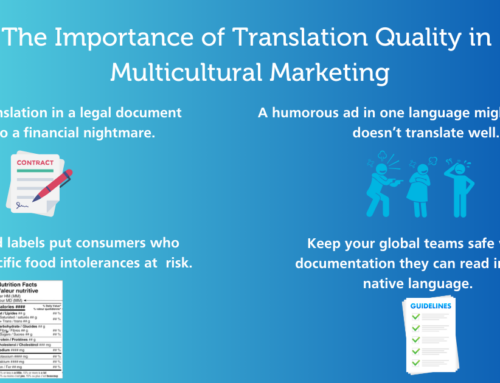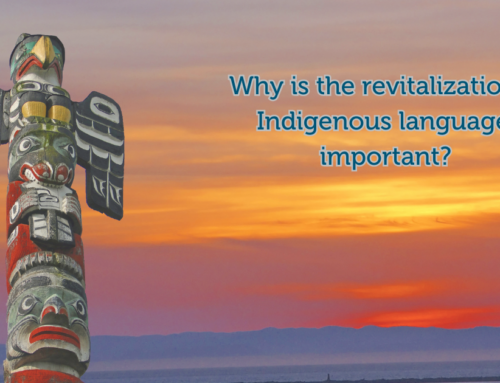With all the buzz surrounding generative AI like ChatGPT, businesses may be tempted to cut corners, save time, and rely on automatic tools for their content. However, take a moment to read this sentence: “In the fast-paced world of business, effective communication is the key to success.”
If you immediately felt disengaged, you will understand why ChatGPT content can be helpful but needs rework. While AI may be a great tool for brainstorming, it’s not as good for writing content. The finished content it produces is lacklustre at best – and that’s especially true for non-English languages.
There are many other reasons why ChatGPT can’t replace the human touch when writing content, especially in other languages.
1. ChatGPT content relies mostly on English data
When ChatGPT responds to a prompt, the output is an amalgamation of other pieces of content writing about the same topic. In a word, ChatGPT generates clichés. In English, that might make the content feel a little verbose or repetitive.
However, with even less data in other languages, it fares significantly worse. That’s because ChatGPT runs on OpenAI’s large language model, which was trained on large swaths of data from the internet – the majority of which is in English. Datasets for non-English languages tend to be much smaller.
Notably, ChatGPT can translate other languages into English but is not as good at translating English into other languages. ChatGPT itself warns users that the quality of translated content can vary:
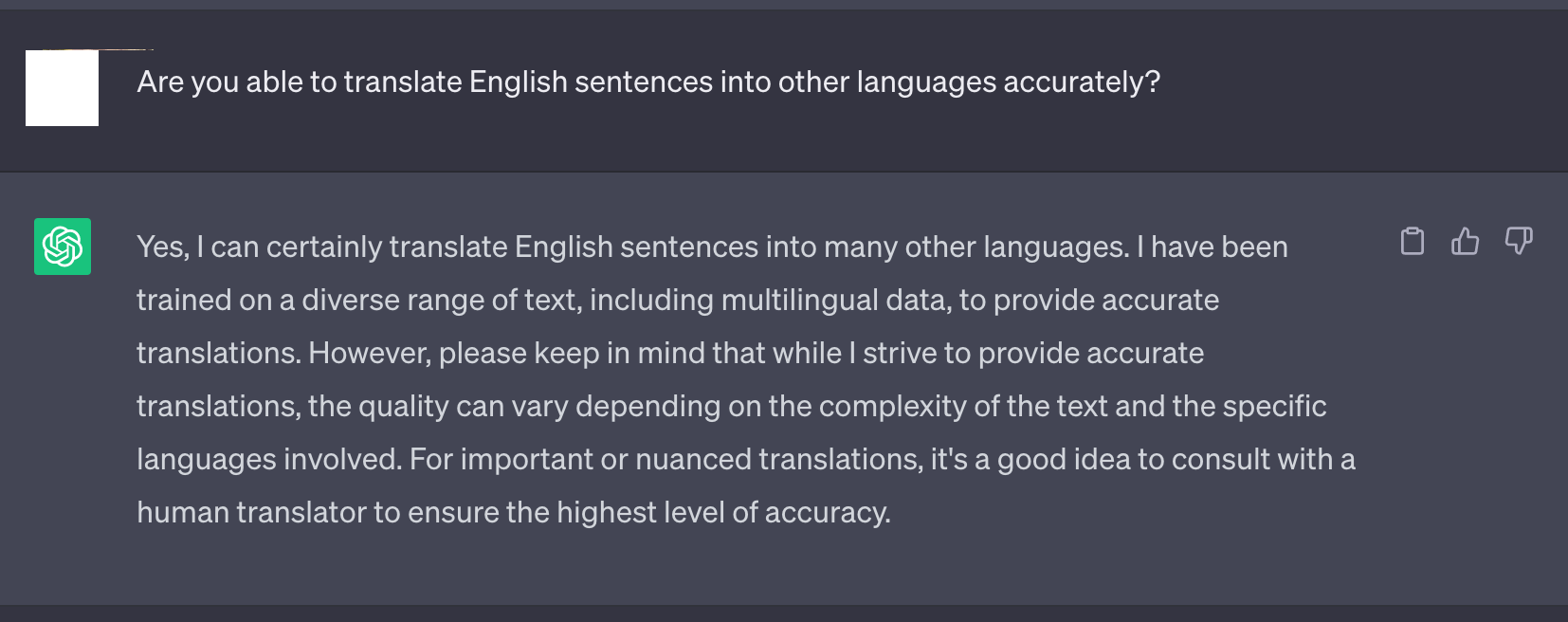
Even from a purely linguistic standpoint, that means it will be more prone to make grammatical errors and produce awkward sentences in non-English languages. But there’s a bigger problem that these datasets have when writing content: cultural bias.
2. There’s a lot of cultural bias in ChatGPT and other AI-generated content writing
The success of translation projects depends not only on ensuring translations are grammatically accurate but also that they speak to the cultural values encoded into each language and demonstrate cultural awareness.
Large language models like ChatGPT tend to fall back on English assumptions and rules when they don’t have enough information from other language data to fill in the blanks. That means that AI-generated translations are likely to have a bias towards Western cultural norms, and worse, make statements that could contain racial and cultural stereotypes.
Relying on AI output without human oversight could be disastrous for businesses trying to appeal to diverse cultures. Ideally, writing content for multilingual audiences should be about demonstrating a commitment to inclusivity – but AI-generated content can undermine these efforts.
3. Using ChatGPT content risks inaccuracy
One of the more significant problems with AI content is its tendency to “hallucinate,” or make up false information that sounds accurate. ChatGPT already has a tendency to produce false content in English and is even more likely to do so in other languages. Here’s an explainer of how these hallucinations work from IBM:
In short, writing content with large language models can produce contradictory sentences, content that contradicts prompt instructions, misrepresented facts, and nonsensical information. CNET relied on ChatGPT content writing for English news articles, which created more work for journalists who had to correct a significant number of errors and damaged reader trust.
At the same time, it is an even bigger potential issue for multilingual businesses, given ChatGPT’s lack of accuracy in other languages. Using these tools for content writing can lead to false advertising and other misinformation on business sites, and hurt customer trust and your bottom line.
4. ChatGPT doesn’t understand language in context
Large language models like ChatGPT are trained to predict the next word in a sentence but also learn from conversations over time. That helps their content writing sound mostly human – but they often miss nuances in tone.
There has been a lot of recent discussion about “prompt engineering” as a skill set, with the suggestion that it’s just a matter of creating the right prompts to get the perfect output. But ChatGPT still frequently falls short, because there is so much context that humans automatically understand about the world that informs the way a piece is written.
Context is particularly important for multilingual translation. For example, jokes that are funny in English might not translate well into other languages – but ChatGPT would not have the broad awareness to understand this.
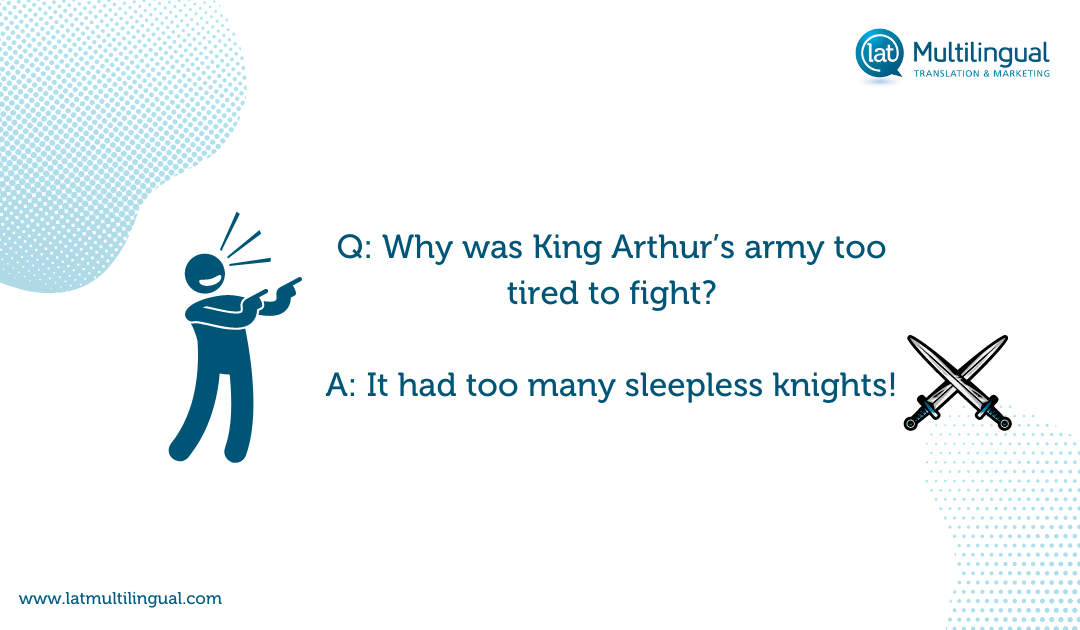
This is especially true for puns, where a direct translation would be meaningless or confusing:



5. ChatGPT’s content writing performance is inconsistent
Recent research has shown that ChatGPT content output isn’t consistent across time – which is another reason not to trust it for writing content since it has the potential to get worse the next time you use it. Ars Technica reported on research that suggests that the language models behind ChatGPT have gotten worse in some areas from March to June 2023.
OpenAI’s secrecy about its large language models means researchers also have no way of predicting its performance in the future. People often assume that generative AI models will improve over time, but that may not be the case.
With enough AI-generated content writing on the internet, over time this may create a negative feedback loop and degrade the performance of our current models. Writing content with ChatGPT might backfire in the future if this happens.
Choose human translators for multilingual content writing
Translation requires a human touch. Each language has its own cultural context, linguistic quirks, humour, and slang that ChatGPT just isn’t likely to get right. Human writers and translators have a deeper understanding of the world outside what’s written online – something that ChatGPT can’t replace, no matter how many parameters its language model has.
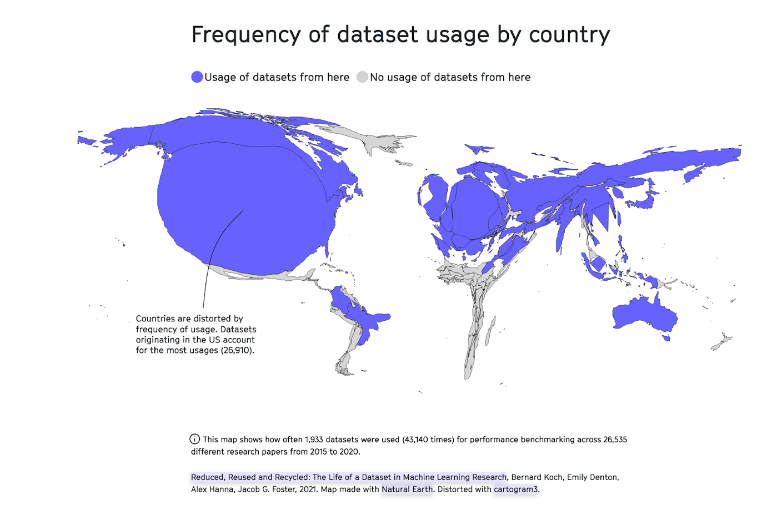
When machine learning performance is skewed towards US data, then writing content with it will embed US values, perspectives, and cultural norms into your translations.
If you’re looking for a multilingual translation, LAT Multilingual is dedicated to using human translators for pitch-perfect content in the language your target audience speaks.
Reach out to learn more about how we can help you create multilingual campaigns and connect with a diverse audience.


